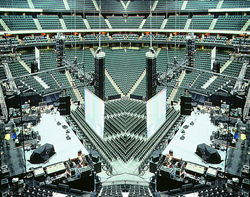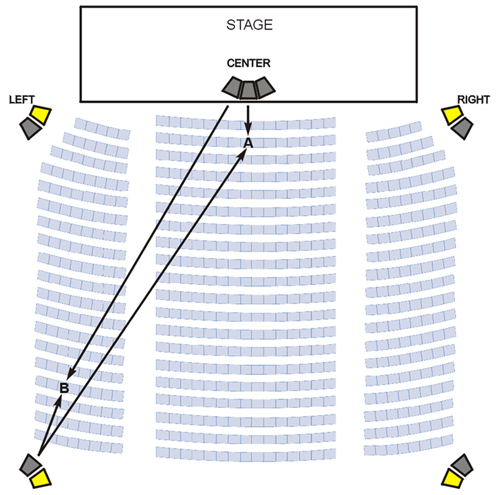
But we want more than that; we want surround sound. How can this be achieved?
Sound propagation in air takes about 90 ms for every 100 feet (30.5 m) of distance, and this creates a very bad situation for large venues that may be hundreds of feet across the audience area.
Additional loudspeakers at the back or sides cause problems because even a medium-sized facility has enough distance from front to back to produce echoes in both directions, as shown in Figure 2.
Listeners in the front will hear the back loudspeakers too late, and listeners in the back will hear the back loudspeakers too soon, compared to the sound propagating across the audience from the front stage.
In theater and cinema surround sound systems, these delay problems are largely mitigated through the limited size of the venue, and judicious application of the program material to the surround system.

Rarely is a particular component of the mix routed to both front and rear simultaneously; this would cause a problem with clarity and intelligibility.
But high-quality surround music needs more precise timing to provide sound from all directions nearly simultaneously for all (or at least most) listeners. One might conclude that there is no way to implement this in a large venue because of the great distances involved.
However, compromises can be made–sometimes with great results. The careful use of electronic delay and a number of well-placed, well-behaved loudspeakers can work wonders.
Whether the goal is to provide additional envelopment, bring the audience “into” the performance, or simply to present sounds from directions other than the front, we need the ability to provide sound that the entire audience can hear specifically from the sides or rear – without delay problems.
